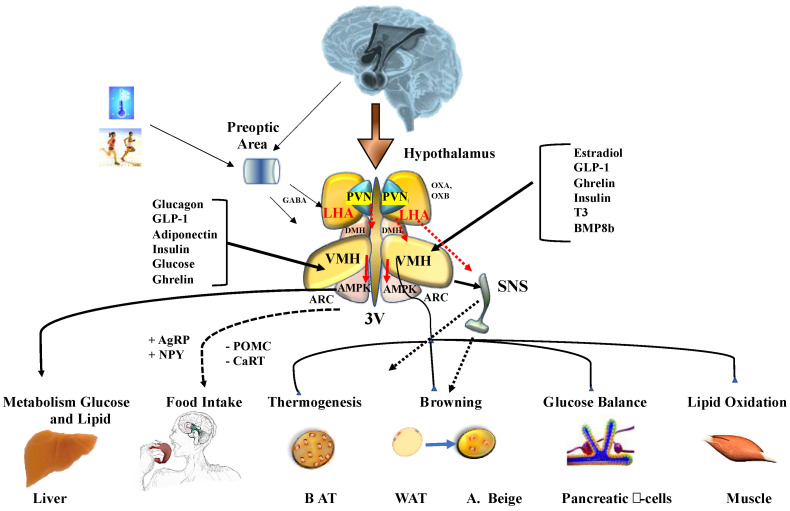Figure 1.
Energy homeostasis controlled by hypothalamus. Cold and physical peripheral signals reach the central nervous system where they interact with their specific receptors in the preoptic area. Adenine monophosphate activated protein kinase (AMPK) can regulate food intake, liver glucose production, lipid metabolism, brown adipose tissue thermogenesis (BAT), white adipose tissue (WAT) browning, and lipid and glycogen synthesis in skeletal muscle. AMPK activity in peripheral tissues is mediated by the activity of the sympathetic nervous system (SNS). Abbreviations: 3V, third ventricle; AgRP, agouti-related peptide; ARC, arcuate nucleus of the hypothalamus; BMP8b, bone morphogenetic protein 8B; CART, cocaine and amphetamine-regulated transcript; DMH, dorsomedial nucleus of the hypothalamus; GLP-1, glucagon-like peptide-1; LHA, lateral hypothalamic area; NPY, neuropeptide Y; POMC: pro-opiomelanocortin; PVN, paraventricular nucleus of the hypothalamus; T3, 3,3′,5-triiodothyronine; VMH, ventromedial nucleus of the hypothalamus. (+) increase intake; (-) reduce intake.

